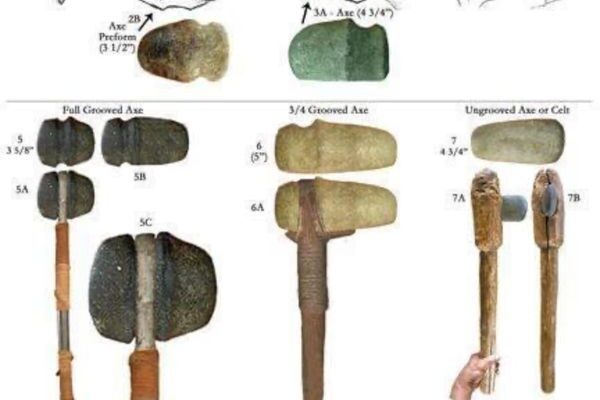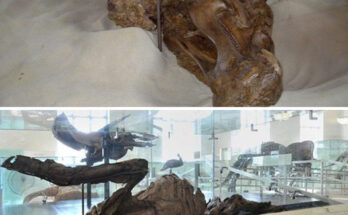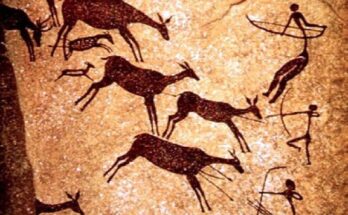Mastering the Craft: Forming Hardstone into Tools – A Historical Guide
The art of shaping hardstone into tools is a testament to human ingenuity and resourcefulness, dating back to prehistoric times. This detailed guide, inspired by the informative chart titled “Forming Hardstone into a Tool,” explores the step-by-step process of crafting stone tools, from raw material to finished implements. As of 03:45 PM EDT on Wednesday, July 02, 2025, this post offers a fascinating look into ancient techniques, providing valuable insights for archaeologists, history enthusiasts, and craft hobbyists interested in replicating these timeless methods.

The Process of Tool Making
The chart outlines a four-stage process, illustrated with detailed sketches and examples of finished tools, showcasing the transformation of hardstone into functional objects:
- Raw Hardstone: The journey begins with a rough, unshaped hardstone, depicted as an irregular, natural rock. This initial stage, labeled “1 – Raw Hardstone,” represents the unworked material, typically sourced from riverbeds or quarries. The accompanying sketch shows the stone’s uneven surface, setting the stage for the crafting process.
- Preform: In the second step, the raw stone is roughly shaped into a preform. The chart illustrates this with “2A” (3 1/7″ diameter) and “2B” (preform, 3 1/2″ length), showing hands chipping away excess material to create a basic form. This stage involves selecting a stone with suitable hardness and beginning the initial reduction, a critical step in determining the tool’s final shape.
- Ax or Adze (3 4/7″): The third stage refines the preform into an ax or adze, as shown in “3A – Ax (3 4/7″)” and “3” with hands further shaping the stone. This involves precise striking and grinding to define the cutting edge, transforming the preform into a recognizable tool. The process highlights the skill required to balance form and function.
- Finished Tool: The final stage, “4,” depicts hands polishing the tool, resulting in a smooth, functional piece. This step ensures the tool’s durability and effectiveness, ready for use in tasks like chopping or grinding.
Types of Finished Tools
The chart features a variety of completed hardstone tools, each with unique characteristics:
- Full Grooved Axe (5A, 5B, 5C): These axes, with lengths of 3 5/8″ to 5″, feature a groove around the middle for hafting to a handle. The sketches show different groove styles, indicating variations in design for specific uses, such as woodworking or hunting.
- 3/4 Grooved Axe (6, 6A): With a partial groove, these axes (5″ and 6″ lengths) offer a different hafting method, depicted with a wooden handle wrapped with cordage. The hematite celt (6A) suggests a reddish hue, adding aesthetic and functional value.
- Ungrooved Axe or Celt (7, 7A, 7B): These tools, ranging from 4 3/4″ to 6″, lack grooves and are hafted directly, as shown with a wooden handle. The ungrooved design is simpler but effective for lighter tasks.
- Pestle (8): A 5″ discoidal or chunky stone, used for grinding, reflects a broader, flatter shape ideal for processing grains or pigments.
- Stone (9): A 5 5/8″ chunk, likely a hammerstone, serves as a basic tool for shaping other stones.
- Raw Hematite (10): An unworked 5″ hematite piece, valued for its color and potential use in pigment production.
- Hematite Celt (11): An 11 5/8″ polished celt, showcasing advanced shaping for cutting or scraping.
- Paint Pot (12): A 2″ shallow dish, possibly for holding pigments, indicating the use of tools in artistic endeavors.
Techniques and Materials
The process relies on percussion (striking with another stone) and abrasion (grinding with sand or water) to shape the hardstone, typically materials like flint, basalt, or quartzite. The sketches illustrate the use of both hands and simple tools, emphasizing the manual skill and patience required. Hafting, shown with wooden handles and cordage, enhances the tools’ versatility, allowing for controlled application of force.
Historical and Cultural Significance
These tools, rooted in the Stone Age, were essential for survival, used for hunting, building, and crafting. The variety in groove styles and shapes reflects regional adaptations and cultural preferences, offering archaeologists clues about ancient lifestyles. The inclusion of hematite and paint pots suggests early artistic expression, linking tool-making to cultural development.
Exploring Stone Tool Craftsmanship
This guide into forming hardstone into tools, as observed on July 02, 2025, provides a window into prehistoric ingenuity. For enthusiasts, experimenting with local stones, hammers, and grinders can replicate these techniques, offering hands-on learning. Visit archaeological sites, study museum exhibits, or join workshops to deepen your appreciation. Whether for historical study or creative exploration, mastering these methods connects us to our ancestral roots—pick up a stone and start crafting your own piece of history!



